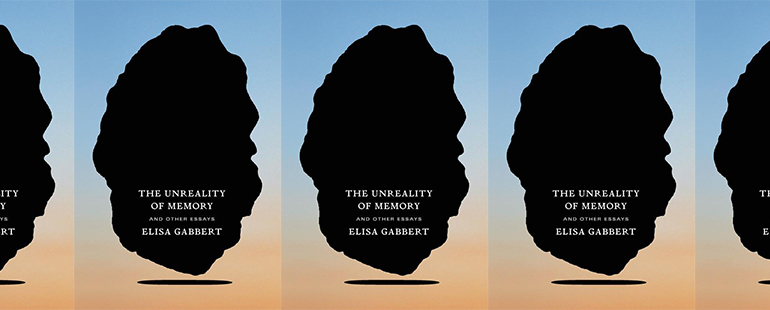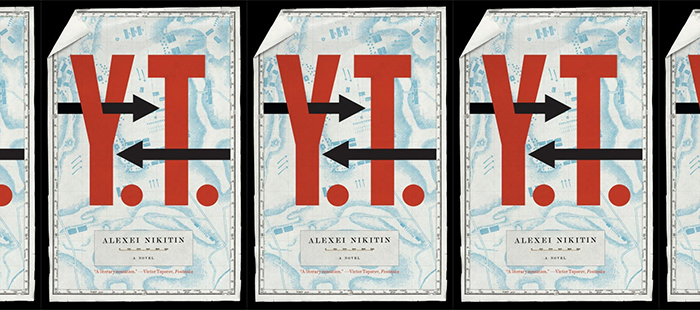The Unreality of Memory & Other Essays by Elisa Gabbert

The Unreality of Memory & Other Essays
Elisa Gabbert
FSG Originals | August 11, 2020
In the epilogue of her new book, The Unreality of Memory & Other Essays, Elisa Gabbert says, “For a while I told people, facetiously, I suppose, that I was writing a book about the end of the world . . . . I wonder if the way the world gets worse will barely outpace the rate at which we get used to it.” The collection that precedes these words is woven essays of personal narrative, research, and questions Gabbert doesn’t presume to answer. In a world that has been rocked in 2020 alone by a pandemic and racial violence, Gabbert’s essays feel incredibly relevant, dipping into epidemiology, othering, and compassion fatigue. In a style reminiscent of the commonplace book, Gabbert interlaces the voices of scientists, psychologists, sociologists, and other thinkers to help explore disaster in greater relief. The myriad voices lend Gabbert a variety of entryways for exploring the problems of our world and make the book less a collection of worries than a highly-informed conversation that invites readers to consider our role in the world’s eventual end.
Because the causes of destruction are so various, the book’s three parts take on a Dante-esque quality, as readers proceed through three distinct “circles” of disaster. Part one explores disaster on the macro-scale: ecological threats, like global warming and contagion, and manmade threats, like nuclear disaster and our own response to destruction. In this section, Gabbert’s candid prose brings the ability to understand and interface with reality into conversation with almost ungraspable ideas—like the “hyperobject,” which refers to “something massively distributed in time and space relative to humans,” like global warming, and “slow violence,” or “time-delayed destruction” over many years, like the physical, mental, and psychological effects of nuclear fallout.
In the first essay in the collection, “Magnificent Desolation,” Gabbert reflects on visually stunning disasters, such as the Challenger explosion, September 11th, and the sinking of the Titanic. She says, “Often, when something bad happens, I have a strange instinctual desire for things to get even worse . . . . I recognize the pattern, but don’t understand it . . . . Of course, my rational mind knows better; it knows I don’t want what I want. Still, I fear this part of me, the small but undeniable pull of disaster.” Gabbert skillfully explores this desire for spectacle, speaking the unspeakable, and why on a cultural level we might crave it: “It is one of the terrible parts of disaster, our complicity: the way we glamorize it and make it consumable; the way the news turns disasters into ready-made cinema; the way war movies, which mean to critique war, can really only glorify war.” The fact that Gabbert doesn’t shy away from exploring the tendencies we’d rather forget makes her work all the more compelling—like disaster itself, it’s hard to look away.
Where the first part of the book dives into large-scale, physical disaster, part two deals with social disaster. It opens on the chapter for which the book is named, “The Little Room (Or, the Unreality of Memory),” and explores memory and our tendency to misremember. Gabbert begins with the memory of her grandmother’s house, many of the rooms which Gabbert recalls with great clarity, though the house no longer belongs to her grandmother and the rooms Gabbert remembers no longer exist. She then turns to the concept of false memory, and how it operates in other realms, like phantom limb and historical memory. She muses on why history continues to repeat itself: “We have not, perhaps, done the right work, passed on the right codes to decipher these memories. Or perhaps it’s simply impossible, to make historical memory feel sufficiently real that we won’t have to repeat history.” Gabbert suggests that the further away we get from events of great cultural or national import, the easier it is to forget, or even misremember, their significance.
But for Gabbert, it’s not just a sort of cultural amnesia that drives the way in which modern events unfold—it’s a faultiness in our ability to even form memories correctly. We are highly suggestible beings, as her essay “Witches and Whiplash” makes clear. The first part of the essay explores “conversion disorders,” maladies in which “emotional stress or anxiety is unconsciously converted or sublimated into physical symptoms.” Hysteria, the symptoms of which were commonly written about throughout the nineteenth century, was such a disease. Gabbert masterfully ties the effects of “conversion contagion” to, among others, the young girls in seventeenth-century Salem who went into fits at the trials of those accused of witchcraft. There’s the desire, perhaps unconscious, Gabbert suggests, to find an outlet for stress and to be seen and taken seriously. We want our pain to matter. The fact that our pain may manifest in socially taboo ways does not erase the fact that we are trying to process pain. In a culture where so many of us are hurting—spiritually, mentally, and physically—Gabbert’s words invite us to feel our pain.
While parts one and two offer readers a small measure of psychic distance from the problems that plague our modern times, part three operates on the micro-level— bringing us face-to-face with our personal response to our culture of disaster. In “True Crime,” Gabbert explores her own media addiction and how media creates enough “news” for a twenty-four-hour news cycle: “In the era of fake news—a natural extension of the era of news proper—we don’t just look to the media for facts, we look to it for narratives.” The effect of copious consumption of carefully curated stories on the human psyche is the topic for the second essay, “I’m so Tired,” which asks questions that are on many of our minds in this world of accumulating tragedy: “But what is my responsibility? How much about global suffering am I supposed to know, and what can I really do with that knowledge?” Gabbert approaches the reader with vulnerability, sharing her own compassion fatigue which, at times, borders on apathy. Though she tries to stay involved, she reports a kind of numbing that comes with her own inability to process all of the pain and grief that outpaces the speed of modern living. The third and final essay in this section, “In Our Midst,” further explores social responsibility and our tendency to make an enemy of the other. Gabbert reflects on attending to the “right” issues. Her words give flesh to the nagging anxiety laid bare not only in the last couple years, when Gabbert was writing these essays, but still today:
When you’ve been accused of focusing on the wrong issue, the simple shame-deflecting response is that we can care about more than one thing at a time. And we can. But I don’t think the problem is entirely trivial—because we can’t actually care about everything equally, especially not all at once. My responsibility may be infinite, but my empathy is not, and there is more evil in the world at any given moment than I feel physically capable of processing, much less addressing with due thought and care.
And so, Gabbert says, we find an enemy outside of ourselves on whom we can place the stress we cannot carry, and that is where we perhaps also place a portion of our identity: “we define ourselves against an ‘adversary.’” By extension, Gabbert says, enemy-making is perhaps inherent to human operation in the world: “meaning—in the form of engagement with evil—is a basic human need.” Though identification of an enemy may help solidify our identity, the result of doing so leads to many of the issues that plague our modern reality; Gabbert leaves it to readers to make the connections. But the comment section of any article or contentious social media thread is a case in point. We seem, at times, to thrive on othering, shaming, identifying ourselves in relationship to who we are not (a liberal, not a conservative; an ally, not an opponent of a particular cause). We tend toward groups and individuals who act and feel similar to ourselves. The other—the enemy—is necessary for helping us define who we are. Destruction, then, is not only happening on the level of the hyperobject; it’s also happening on the level of the microaggression.
The Unreality of Memory is both an examination of conscience and a cataloging of modern American anxiety. Many times while reading, this book made me feel both less and more alone. Like a diary one revisits too soon after writing, there are parts of this book that are meant to discomfort. For example, Gabbert often ends her essays with a sentence that slightly troubles the rest of the piece, adding an element of uncertainty that’s appropriate to an ever-shifting reality. For example, at the end of “Sleep No More,” Gabbert says, “My own past suffering is often a great source of comfort for me. This must mean I’ve never really suffered.” Like a deep massage that does not always feel wonderful as the therapist works through the knots, Gabbert’s book touches our pressure points with the intention of helping us identify sources of pain in our own lives. And just as a massage leaves us feeling sore but also better, her work challenges us to see our collective suffering as one in which we have some personal responsibility for addressing. She brings to the surface not only the physical suffering that disaster brings but the mental work it takes to engage with our high-tech, information-heavy modern landscape.
At this particular moment in time, it is almost chilling to read certain sections of the book, like “The Great Mortality,” the chapter where Gabbert quotes Connie Goldsmith’s 2018 book Pandemic: “Scientists do not yet know what will cause the next pandemic . . . . What scientists and epidemiologists do know is that human activity is largely responsible for the spread of disease.” Our own complicity in the problems facing our modern world is a theme Gabbert returns to again and again. What she does not prescribe are the ways in which we’re called to take action against the forces that threaten our—perhaps gradual—demise. Like the friend in “I’m so Tired” who told Gabbert “there are many forms of activism,” Gabbert brings the problems to our attention, acknowledges she’s in the same boat with us, and quietly challenges us to respond.


